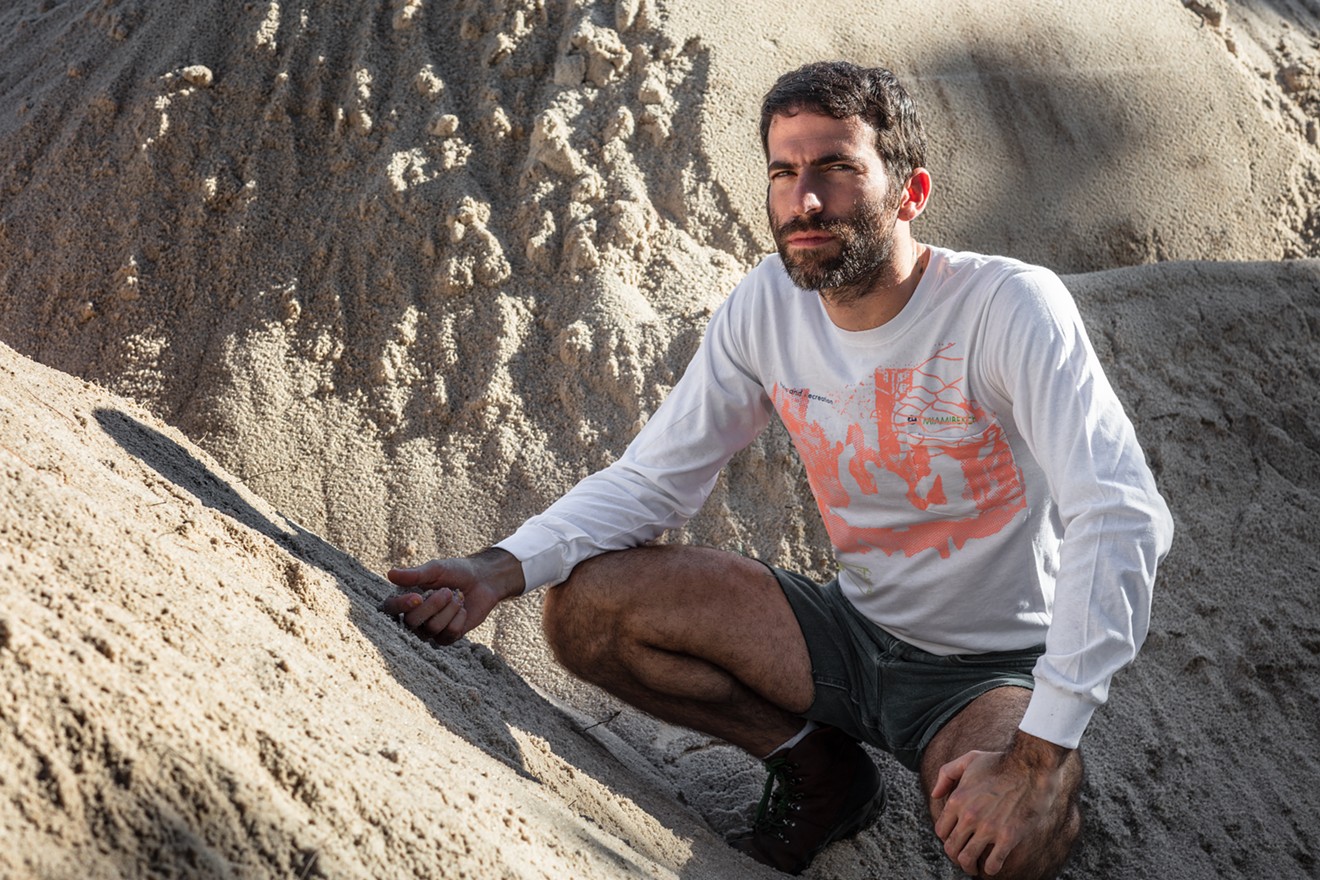“The water during king tides would just come right over the seawall, and so they would put pumps along the roadway, and they'd pump water out into the Intracoastal,” Soto says. “But [the water] was all at the same level, so it was literally doing nothing. It was just noise.”
Three years later, Soto co-opted the city’s apparent incompetence into an artwork of their own. Flood Relief, a 2017 installation that was part of a series on sea-level rise sponsored by Miami-Dade County Department of Cultural Affairs' Art in Public Places, included multiple industrial water pumps that perpetually pumped water in and out of Biscayne Bay. The installation was placed at Museum Park outside Pérez Art Museum.
This wasn’t the first or last time Soto grappled with the implications of
After months of research and development — which included sitting in on stuffy government meetings and hauling abandoned sandbags on the back of Soto's bicycle — the artist's installation is finally taking shape. Sand: Amphitheater, Theater, Arena is Soto's attempt to contextualize, question, and retell the story of how South Florida came to be and what might lead to its demise. For three days in October and November at Collins Park, Soto will organize workshops, performances, and storytelling sessions in an arena constructed of 11,000 sandbags. Local artists, writers, and historians will occupy the space, where they will present concerts, readings, and performances with their gaze turned toward the climate. Among those scheduled to participate are historian Marvin Dunn, poet Glenda Romualdo, and postpunk performance artists Donzii. Each event will revolve around the symbol of sand, one of the key constants in the birth and development of Miami Beach. Without sand — and lots of it — Miami Beach wouldn’t be.
Soto is an unapologetic art thief, who identifies as Duchampian and defends said theft with a quote from Picasso: “Good artists copy; great artists steal.” Just as the idea for Flood Relief was stolen from that Indian Creek incident, the Sand installation was inspired by the city’s beginnings and, in particular, developer Carl Fisher’s efforts to create a tropical retreat. In the early 20th Century, Fisher dredged Biscayne Bay to manifest permanent, residential islands in an otherwise ephemeral environment.
If gas-powered pumps pushing water back into Biscayne Bay is absurd, it’s just as asinine to think that Soto’s work will, in some direct way, fend off the ocean’s gradual rise. Of course, that isn't Soto's job, says Elizabeth Wheaton, director of the Miami Beach Department of Environment and Sustainability, who will participate in Sand.
“Art isn't in itself going to change the sea level,” Wheaton says, describing the logic behind initiating the residency program. “It isn't an action to protect the city, but it does increase awareness. It's about having a
“For me," Soto says, "the role of an artist is to point at truths or things we have lost sight of. Artists have to be historians. They have to be scientists. They have to look at processes that are already in place and steal from them. That's the Picasso quote: 'Good artists steal.' To a certain extent, that's really true. I like to think of my role as someone who helps the cause by just helping to clarify things, helping to reframe and to give things a new lens."
When it comes to the future, Soto is not an optimist, at least not in the conventional sense of the term. The artist thinks South Florida will continue to survive — if not thrive — as a sandbox for the rich, privileged, and famous while the historically neglected poor are forced from their homes.
“I’m optimistic about [South Florida] surviving,” Soto says, “but I’m not optimistic about who gets to benefit from that survival, so that's what I've been focusing on as a way to affect change and awareness.” Floating roads, buoyant building, billions of dollars spent on updating infrastructure — none of these are far-fetched futures, Soto says, but they are unfortunate given the lives they would leave behind. “It's idealistic to foresee there not being a Miami. It's almost like a dream to think that capitalist forces would allow that to happen.”
Sand: Amphitheater, Theater, Arena. Sunday, October 28; Saturday, November 3; and Saturday, November 17, in Collins Park, 2100 Collins Ave., Miami Beach; artcentersf.org/sand. Admission is free.












